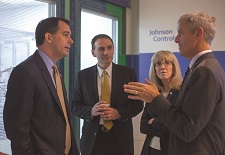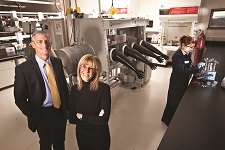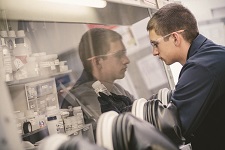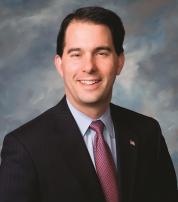

According to fDi Benchmarks, in 2012, Wisconsin corporations, individuals and universities held 26,285 patents, ranking the state 15th in terms of patents per 100,000 people. The University of Wisconsin–Madison, the state’s flagship university, is consistently ranked in the top five research universities in the nation in research dollars. In 2011, the institution awarded $1.13 billion in research, more than any other public university in the nation.
These research and development efforts are drawing together educational institutions, private-sector participants and government agencies to create new commercial opportunities, as the following examples show.
The Energy Advancement Center
In the heart of the UW-Milwaukee campus sits the largest, most advanced energy storage pilot line at any academic institution in North America. The unique location of this dynamic lab is just one of the reasons it draws international attention. The lab, known as the Energy Advancement Center, is bringing significant energy storage findings to its research partner, Johnson Controls Inc.

“We’ve set out to position the UW–Milwaukee campus-based lab as a proving ground for the newest in R&D — side-by-side research collaboration that aligns the innovation of academia with the product development push of a public company,” explained UW–Milwaukee Chancellor Michael Lovell.
This collaboration combined with Johnson Controls funding, the support of federal research dollars and state grants has allowed the Energy Advancement Center at UW–Milwaukee to expand its footprint within just a few years. Its climate-controlled “glove box” lab has already doubled in capacity and there are now six Johnson Controls Ph.D. scientists living on campus and mentoring 22 UW–Milwaukee students. The program has an impressive 92 percent success rate on proposals for grants.
“The team of researchers, including students, faculty and scientists are tasked with multiple challenges,” said MaryAnn Wright, vice president of engineering and product development for Johnson Controls. “Each year we fund projects for teams throughout the UW system to discover the next generation of batteries. There are major breakthroughs happening here — it’s attracting the best students and faculty to Wisconsin, building an exceptional talent pipeline for our state and for the industry and helping to position our company’s technology leadership strategy.”
The mutually beneficial relationship between the UW system and Johnson Controls is an alliance hard to find elsewhere. “A partnership normally solves an immediate problem, but this one is contributing to the future of energy and providing an end-to-end solution,” added Wright. “The collaborative model we’ve developed with the UW system starts with basic and applied research, moves on to engineering and then to product development and validation. This complete ecosystem ties all the pieces together and ultimately takes these major scientific breakthroughs directly to the market.”

Wisconsin Center for Dairy Research
As the largest dairy center in the U.S., the Wisconsin Center for Dairy Research (CDR) plays a vital role in supporting innovation in the dairy industry in Wisconsin (where dairy has a $26 billion economic impact). While the Center is located on the University of Wisconsin-Madison campus, it is not associated with a specific department, which CDR Director Dr. John Lucey cites as a distinct advantage. “As an independent center, we are able to engage in cross-campus collaboration that produces wide-ranging industry benefits,” he explained.
Roughly half of the CDR’s approximately $4 million annual budget comes from dues paid to the Wisconsin Milk Marketing Board (WMMB) from dairy farmers. The Center draws an additional $1 million annually in national dairy research grants and about $700,000 directly from dairy companies that benefit from CDR’s globally respected services provided by a staff of 37 industry experts. About 1,500 industry professionals per year enroll in CDR training programs and the Center annually engages with some 100 companies on pilot plant projects or training activities.
“Most companies do not have pilot plant facilities suitable for testing new ingredients like enzymes or cultures in dairy products,” explained Lucey. “CDR fills that gap.” The Center also hosts an annual research forum that draws top R&D company representatives from around the world.
The presence of a world-leading dairy research center in Wisconsin is no accident, according to Lucey. “We have a truly unique situation in this state, where research institutions, government agencies and companies work collectively toward a common goal — sustaining a vibrant dairy industry,” he said. Lucey added that the infrastructure and professional network supporting the dairy industry in Wisconsin is unlike anywhere else in the world. Nowhere else do dairy companies have such ready access to dairy experts.

A Collaborative Approach to R&D
Throughout Wisconsin, businesses and supporting organizations are working together to provide an intellectual network that advances industry innovation. With its specialized workforce, academic and private-sector resources and ready-built infrastructure, Wisconsin provides a business climate that helps expanding and relocating companies achieve success.

